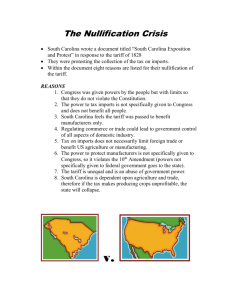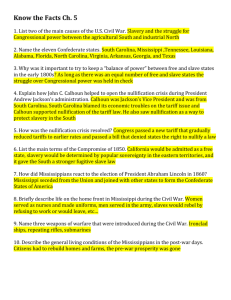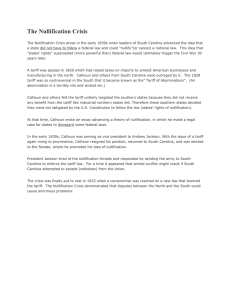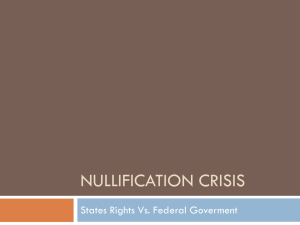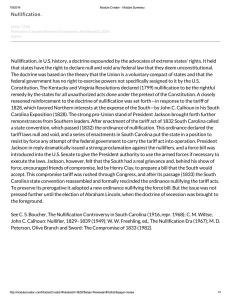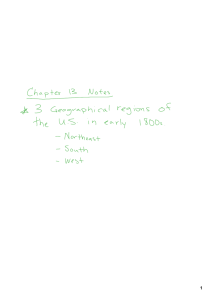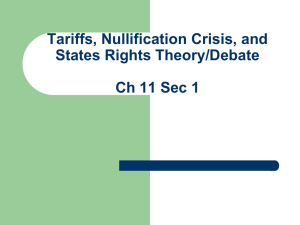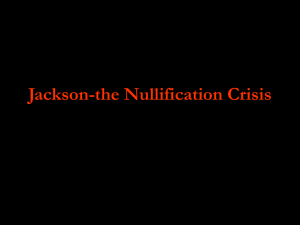Tariffs and Nullification
advertisement
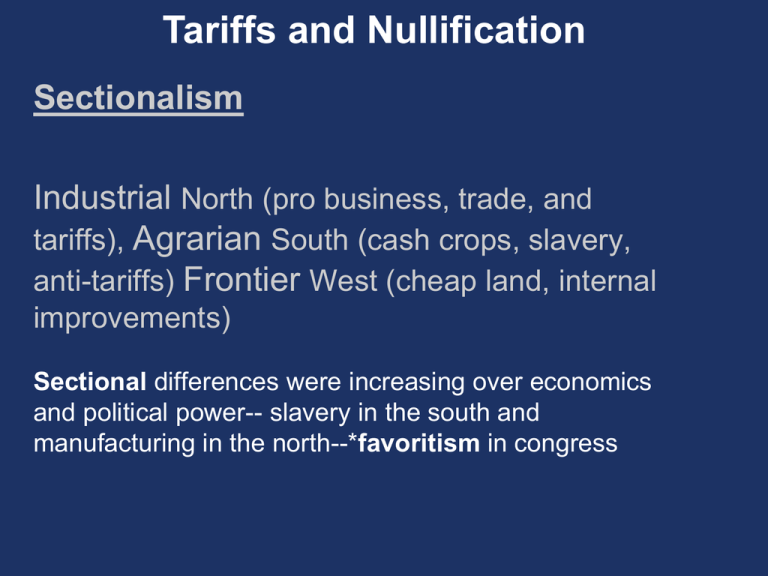
Tariffs and Nullification Sectionalism Industrial North (pro business, trade, and tariffs), Agrarian South (cash crops, slavery, anti-tariffs) Frontier West (cheap land, internal improvements) Sectional differences were increasing over economics and political power-- slavery in the south and manufacturing in the north--*favoritism in congress Tariffs Protective tariffs (taxes on imported products) were welcomed in the north and despised in the south- southern states viewed tariffs as favoring the Northern business elite Tariff of Abominations- an 1828 tax on imported wool with extremely high rates—the south had had enough States’ Rights became a serious issue, as South Carolina and VP Calhoun began to consider nullification States’ Rights Doctrine- since each state voluntarily entered and therefore makes up the union, they should have powers equal to or greater than the federal government Nullification- ignoring or rejecting a law deemed unfair Nullification Act- South Carolina law which said the 1828 Tariff of Abominations and the 1832 tariff were null, void, and non-binding to the state Nullification Crisis- Calhoun resigns as Vice President, officially declares the States’ Rights Doctrine, and South Carolina threatens to secede Hayne-Webster Debate- Daniel Webster sternly announces that, “liberty and union, now and forever, one and inseparable”-individual states can’t just “come and go” from the union, nor can they pick and choose which laws to follow Jackson’s Response to the Crisis Force Bill- Jackson calls on federal troops to prepare to invade South Carolina as a way to enforce the tariff Henry Clay proposes a compromise where the tariff will decrease gradually over time- both sides reluctantly agree

